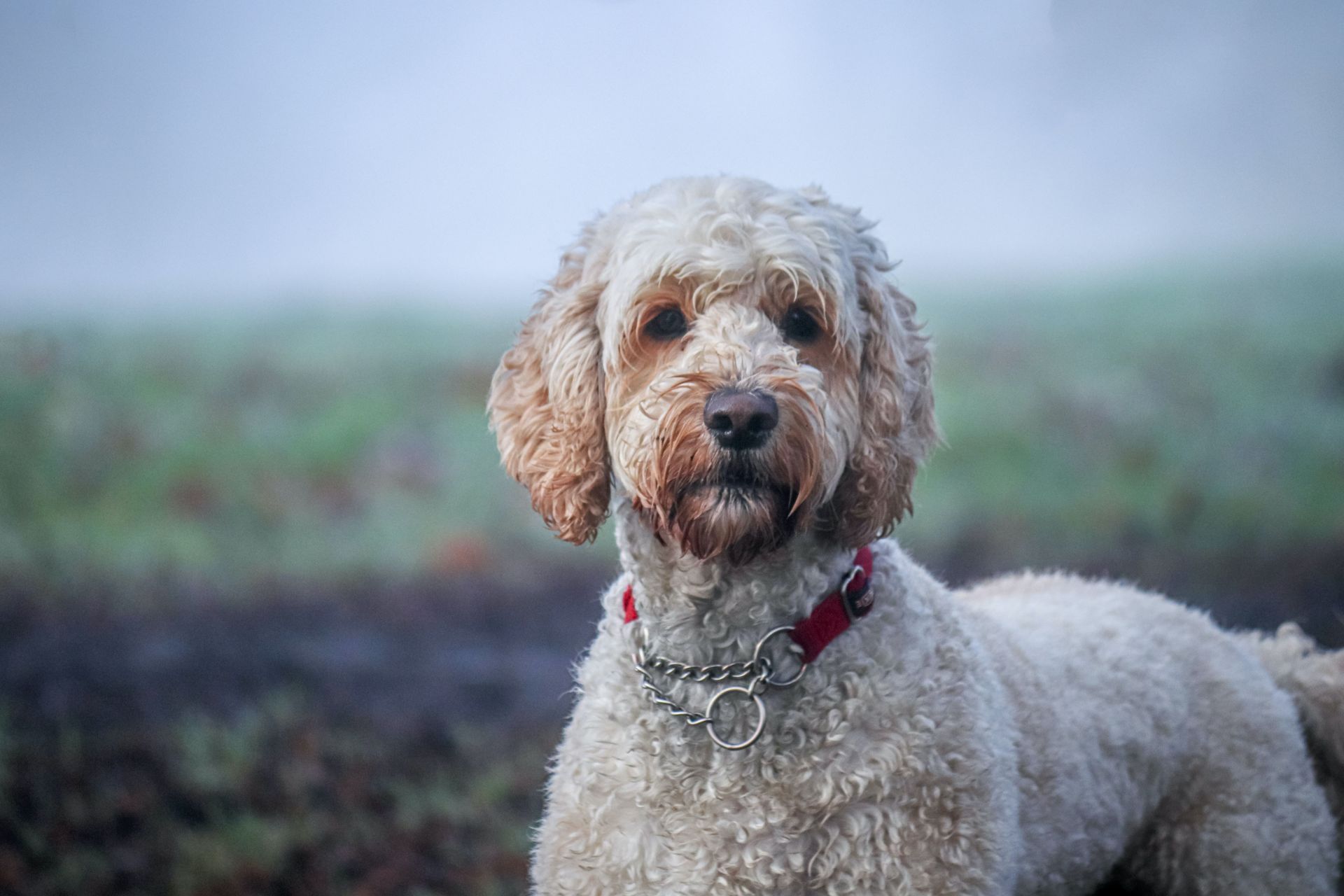Labradoodle
Showing the single result

Labradoodles are charming crossbreed dogs resulting from the mating between a Labrador Retriever and the miniature or standard Poodle. This hybrid is just one of the many Poodle mixes that have become increasingly popular among people with dog allergies.
The goal for the creation of the Labradoodle was to have a hypoallergenic guide dog. That meant creating an intelligent, loyal, and gentle companion with a coat that could trap shed hair and dander. Many Labradoodles possess these qualities, but are highly dependent on the skill and quality of the breeders.
A well-bred and healthy Labradoodle is a versatile, friendly, and affectionate animal that is capable of filling many roles – whether as a family pet or as a working dog.
Temperament
Like both of the parent breeds, Labradoodles tend to be smart and easygoing dogs. As far as personality traits are concerned, every dog can be different depending on the inherited genetics from the parents. However, most Labradoodles are friendly and sweet dogs, since both the Labrador and the Poodle are often family dogs as well. A Labradoodle may take after the Labrador side and be outgoing and playful, or be more like the Poodle side with a reserved and gentle personality. What is common for almost all Labradoodles is that they are not inherently aggressive. They typically get along well with both humans and other dogs. Well-trained and well-socialized Labradoodles are joyful and cheerful dogs, eager to please their humans and willing to go on any adventure. Their high intelligence allows them to be trained to do a variety of tasks, and their sweet disposition and sensitivity to human emotions means they excel at being therapy dogs.The Ultimate Guide to Labradoodle
Origins
In the late 1980s, an Australian breeder named Wally Conron conducted the first intentional crossbreeding of a Labrador Retriever and a Poodle. The resulting dog was named Sultan, and he possessed almost all the positive qualities of both the parent breeds. He had the hypoallergenic coat of the Poodle side, as well as the work ethic and gentle nature of the Labrador side. Sultan went on to be a guide dog for a woman in Hawaii, and he had a long and successful career with her. This success drew the attention of other breeders who saw the merit in having a hypoallergenic guide dog. Because the breed is relatively new, most specimens of the breed will be first-generation or F1 Labradoodles. The 50-50 split in genetics of both parent breeds may result in a variance of traits within each litter. Australian Labradoodles are more tightly regulated than other Labradoodles, as there is an ongoing effort to standardize the breed.
Key Characteristics of Labradoodle
| Labradoodle | Like both of the parent breeds, Labradoodles tend to be smart and easygoing dogs. As far as personality traits are concerned, every dog can be different depending on the inherited genetics from the parents. However, most Labradoodles are friendly and sweet dogs, since both the Labrador and the Poodle are often family dogs as well.
A Labradoodle may take after the Labrador side and be outgoing and playful, or be more like the Poodle side with a reserved and gentle personality. What is common for almost all Labradoodles is that they are not inherently aggressive. They typically get along well with both humans and other dogs.
Well-trained and well-socialized Labradoodles are joyful and cheerful dogs, eager to please their humans and willing to go on any adventure. Their high intelligence allows them to be trained to do a variety of tasks, and their sweet disposition and sensitivity to human emotions means they excel at being therapy dogs. |
| Exercise Needs | Both the Poodle and the Labrador Retriever are high-energy and lively dogs who love to play, so most Labradoodles will follow suit. Since they’re water dogs, the Labradoodle also loves to swim and will be a natural fit for owners who enjoy water sports.
All sizes of Labradoodle will have moderate-to-high exercise needs. This means at least 45 minutes to an hour of exercise per day for Labradoodles with a miniature Poodle parent, increasing to an hour and a half of exercise for larger Labradoodles.
Since most Labradoodles will need some time to run around off-leash, it’s recommended to give them time in a secure, fenced outdoor space. They also require a lot of mental stimulation, so challenging games and toys will be good for most Labradoodles. Agility courses and other dog sports are a good match for Labradoodles. |
| Labradoodle Grooming | The grooming requirements of a Labradoodle will depend greatly on the dog’s coat type. There are considered to be three types of Labradoodle coats: Wool, Fleece, or Hair.
Wool coat Labradoodles will have lamb-like curls and will generally not shed. Fleece coat Labradoodles will have a straight or wavy coat with a silken texture. Hair coat Labradoodles will have a short, wiry coat.
For all three coat types, it is advised to keep their coat at around 4 to 6 inches in length for the comfort of the dog. Labradoodles should generally be brushed around twice or thrice a week, with more frequent brushing required for hair coat Labradoodles.
Most Labradoodles are not naturally smelly, and do not require very frequent baths. A bath every two to three months is sufficient, aside from if your Labradoodle rolls around in dirt or mud outdoors.
Nail trimming once or twice a month is standard, and daily tooth brushing is recommended to prevent tooth and gum disease. |
| Labradoodle Training | Labradoodles love making their owners happy, and they have the intelligence to learn commands and tricks quickly if they’re properly motivated. Most Labradoodles will be relatively easy to train, even for novice dog owners. They don’t require a very firm hand and aren’t overly sensitive to the consistency of training.
Even so, it’s beneficial to train your Labradoodle regularly, so that they learn to follow commands and develop good behaviors. The ideal approach to training is positive reinforcement, whether it be in the form of praise, treats, or play.
It is possible to have your Labradoodle trained to be a guide dog, but the certification process requires training from a licensed trainer. This training is advanced, and requires the dog to know basic commands before starting. |
| Labradoodle Lifespan And Health Issues | Labradoodles have a normal lifespan for their size, living up to 12 to 14 years old. Labradoodles may be prone to:
|
| Labradoodle Size And Space Requirement | Because Labradoodles may have different sizes of Poodle parents, there are a variety of Labradoodle sizes. These sizes are generally the same with Australian Labradoodles.
Standard Labradoodles will stand between 21 to 24 inches at the shoulder, and will weigh between 50 to 66 pounds. Medium Labradoodles will stand between 17 to 20 inches, and weigh between 30 to 45 pounds. Miniature Labradoodles will stand between 14 to 16 inches at the shoulder, weighing between 15 to 25 pounds.
To more accurately gauge how big a Labradoodle puppy will grow, it’s best to meet the parent dogs before buying the Labradoodle puppy.
Most Labradoodles will be happier and better-exercised in larger homes with ample outdoor space for play. They love to play fetch and enjoy running around off-leash.
Despite both the parent breeds having working dog backgrounds, Labradoodles are bred to be companions first, with working aptitude as a secondary consideration. They are not suited to living outdoors away from their family. |
Other considerations:
- Labradoodles are often advertised as hypoallergenic, but this greatly depends on the type of coat that they inherit from their parents. The curlier the coat, the better it is able to trap shed fur and dander, lessening the amount of allergens that escape into the air.
- The breed traits of Australian Labradoodles may be more consistent than other Labradoodles.
- Labradoodles can get along with other species of animals, so long as they are introduced properly or while the Labradoodle is a puppy.
How can I take good care of my Labradoodle or Puppy?
Proper socialization
Socialization is important for Labradoodle puppies to learn proper behavior and good habits. Doing socialization work early will help ensure that your Labradoodle puppy grows up to be a gentle and well-behaved dog. Most Labradoodle puppies will be released to new owners around 8 weeks old, which is a crucial time in a puppy’s life. The period from 8 to 12 weeks of age is when puppies will be receptive to new stimuli.
Proper nutrition
Labradoodle puppies should be given high-quality, premium dog food to encourage proper growth and development. Smaller Labradoodles may need more frequent feedings of smaller meals throughout the day. You may ask your veterinarian for more specific recommendations for your Labradoodle puppy, as their needs may be different from other Labradoodles.
Up-to-date vaccinations
Your veterinarian will be better able to advise you on when you should bring in your puppy, but most Labradoodle puppies will have regular vaccinations and deworming within the first few weeks. Follow the schedule the veterinarian gives you to the best of your ability so that your puppy is protected.
Most Asked Labradoodle Questions
-
+How Much do Labradoodle Puppies Cost
